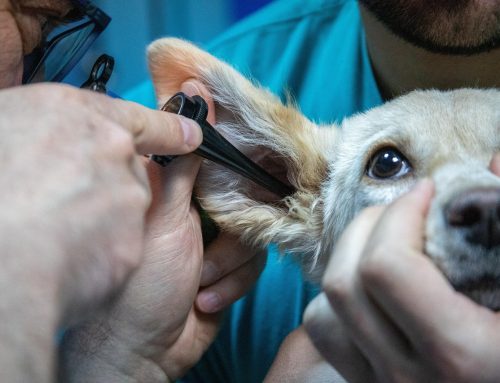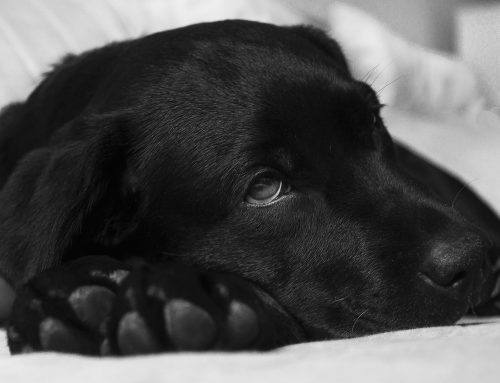
Table of Contents
- Can Dogs See In The Dark? Do Dogs Have Night Vision?
- How Do Dogs See in the Dark?
- Can Dogs See in Complete Darkness?
- Do Dogs See Colors at Night?
- Why Do My Dog’s Eyes Glow in the Dark?
- How Does a Dog’s Night Vision Compare to a Human’s?
- Can Dogs See Better Than Cats at Night?
- How Can I Help My Dog See Better at Night?
- Can Dogs See the TV or Phone Screen at Night?
- When to Worry About Night Vision Changes
- FAQs About Dogs Seeing in the Dark
- The Bottom Line: Dogs Can See Impressively Well at Night
Can Dogs See In The Dark? Do Dogs Have Night Vision?
If you’ve ever watched your dog move confidently through a dimly lit room or backyard at night, you might wonder—can dogs actually see in the dark? The short answer: yes, but not the way humans do.
Dogs have impressive low-light vision that helps them navigate and detect movement when visibility is poor. While they can’t see in complete darkness, their eyes are designed to make the most of even small amounts of light. Understanding how canine vision works gives you insight into your dog’s nighttime behavior and unique view of the world.
How Do Dogs See in the Dark?
Dogs see better in the dark because their eyes are biologically built for it. The canine eye has several special adaptations that enhance low-light vision. They have more rod cells in their retinas than humans do—these are the light-sensitive cells responsible for detecting motion and dim light. The more rods an eye has, the better it performs in darkness.
Another unique feature is the tapetum lucidum, a reflective layer behind the retina that acts like a mirror, bouncing light back through the eye to give it a second chance to be absorbed. It’s the same reason a dog’s eyes appear to glow when light hits them at night. Lastly, a dog’s pupils open wider than ours, allowing more light to enter. Together, these features give dogs vision that works like natural night-vision goggles—excellent for detecting motion and shapes in dim conditions, though not crystal-clear or colorful.
Can Dogs See in Complete Darkness?
No, dogs can’t see in total darkness any more than we can. Vision requires at least a small amount of light to process images. However, dogs only need a fraction of the light humans do. A room that appears pitch-black to you may still allow your dog to navigate without trouble.
This ability comes from their evolutionary roots. Dogs’ ancestors—wolves—are crepuscular, meaning they’re most active at dawn and dusk. Their eyes evolved to handle twilight conditions, which explains why your dog moves so confidently when light is low.
Do Dogs See Colors at Night?
Yes, but not vividly. Dogs are dichromatic, meaning they primarily see in shades of blue and yellow. Reds and greens appear as muted grays or browns. At night, when rod cells take over and cones are less active, color perception fades even more.
So while your dog can still detect shapes and movement, the world likely looks to them like a muted, bluish-gray landscape after sunset. It’s not colorful, but it’s highly functional for survival and orientation.
Why Do My Dog’s Eyes Glow in the Dark?
That eerie green or blue glow you see in your dog’s eyes at night comes from the tapetum lucidum—the same reflective membrane that enhances their low-light vision. When light hits the retina, the tapetum reflects it back, amplifying visibility in the dark.
Not every dog’s eyes glow the same color, though. The hue varies depending on the dog’s breed, age, and eye color. Lighter-eyed dogs often reflect a greenish glow, while darker-eyed breeds may have blue or yellow reflections. Puppies sometimes appear to have bright white or blue glows simply because their eye pigment hasn’t fully developed. It’s completely normal and even a sign of a healthy eye structure.
How Does a Dog’s Night Vision Compare to a Human’s?
A dog’s night vision is about five times better than a human’s. Thanks to their abundance of rod cells and the tapetum lucidum, dogs can pick up motion and shapes in near darkness. Humans, on the other hand, rely heavily on cone cells that provide color and detail in bright light but perform poorly in dim settings.
That means your dog might spot a squirrel rustling in the shadows long before you do—but you’d still have the advantage on a sunny afternoon. Think of it this way: humans see in high-definition color, while dogs see in lower resolution but with superior night contrast.
Can Dogs See Better Than Cats at Night?
Not quite. Cats still reign supreme when it comes to night vision. Their eyes contain even more rod cells than dogs, along with a larger tapetum lucidum that captures and reflects more light. However, dogs still outperform humans by a wide margin.
This difference reflects each species’ natural behavior. Cats evolved as stealthy nighttime hunters, while dogs relied on both sight and scent for group hunting during twilight hours. So while your dog has impressive low-light vision, your cat is the true master of the dark.
How Can I Help My Dog See Better at Night?
Even with excellent night vision, aging and health conditions can reduce how well dogs see. You can help by keeping your home and yard safe and easy to navigate. Adding soft nightlights or motion-activated lighting helps your dog avoid obstacles. Try not to rearrange furniture too often—dogs rely on scent and memory to move around, and sudden changes can confuse them.
Reflective collars or LED tags also improve visibility on evening walks, especially near roads. Finally, make sure your dog has regular eye exams. If you notice cloudiness, redness, or your dog bumping into objects, it might be time for a check-up to rule out cataracts or other vision problems.
Can Dogs See the TV or Phone Screen at Night?
Yes, but not the same way you do. Dogs can perceive movement on screens, but since their color spectrum is limited and their eyes process flicker differently, the images may appear dim or slightly blurred.
At night, the brightness of a television or phone stands out against darkness, so your dog may notice moving shapes or hear sounds that grab their attention. When dogs bark at other animals on TV, they’re usually reacting to the motion and sound—not to the detailed image you see.
When to Worry About Night Vision Changes
If your dog starts acting hesitant in dark rooms, bumping into furniture, or showing fear at night, these could be early signs of vision loss. Common causes include cataracts, glaucoma, progressive retinal atrophy (PRA), or diabetes-related eye changes.
Dogs can adapt well to partial blindness, especially with consistent routines, but early detection is key. Schedule an exam with your vet if you notice changes in how your dog moves or behaves after dark.
FAQs About Dogs Seeing in the Dark
Can dogs see in the dark like night-vision goggles?
Not exactly. Dogs can’t see in total darkness, but they make excellent use of even the faintest light, similar to using light-enhancing lenses.
Do dogs get scared of the dark?
Most dogs aren’t afraid of the dark itself. However, if their vision declines or they can’t see familiar surroundings clearly, they may feel nervous or disoriented.
Can puppies see well in the dark?
Not right away. Puppies’ eyes take several weeks to develop full vision, including their night-sight abilities. Their vision sharpens as the tapetum lucidum matures.
Why does my dog stare into the dark?
Dogs may be picking up on movements or sounds that humans can’t detect. Their heightened night vision and hearing allow them to sense things that escape our notice.
Do bright lights hurt a dog’s eyes after being in the dark?
Yes, sudden bright lights can overwhelm their sensitive eyes, much like how we squint when the lights flip on in a dark room.
The Bottom Line: Dogs Can See Impressively Well at Night
Your dog’s eyes are built for twilight. While they can’t see in complete darkness, their enhanced low-light vision lets them move, play, and explore long after the sun sets.
By understanding how dogs see at night, you can create safer environments and appreciate just how incredible their senses truly are. Whether it’s a moonlit walk or a game of fetch at dusk, your pup’s night vision helps them experience the world in ways we can only imagine.






